
Humetro city tour
- text size
- Enlarge Text Size
- Shrinking font size
Choryang lbagu road
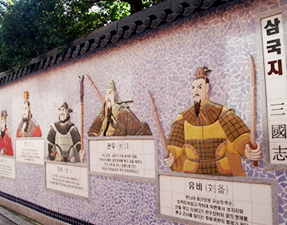
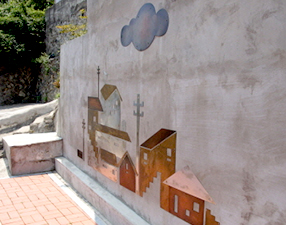
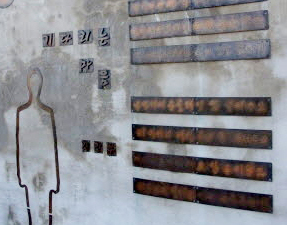
In the late 1800s, it was called ‘Qingwan’ across Busan station. It was Qing dynasty then in China. When Gapsin Coup took place in 1884, the Chinese consulate was established in Choryang and the nearby area had residential extraterritoriality for the Chinese. Yongdusan mountain was a Japanese sector with Waegwan, and Choryang right next to it was the Chinese’s. By then, the place Busan station is now was the sea. Until 1900 when the land was reclaimed, it was the seat with white sand and green pine trees so that the Chinese built markets as well as houses to make a Chinese shop street alongside Choryang sea. The shops could be compared to today’s duty-free shops as they sold dry goods, silk, shoes, and mirrors from China. Moreover, it was always crowded with customers since it was the only way to go to Yeongju-dong from Choryang. Some of the Chinese who stood the age of the Japanese and US military going in and out are still staying here to sell Chinese food in the street called ‘Shanghai Street.’ It is also called ‘China Town’ in Busan with many kinds of delicious Chinese food. Chinese immigrant cooks are cooking with iron pans in every restaurant. There are a lot of food that are difficult to try in a Chinese restaurant in a small town. If you order a fried shrimp dish, they will show you the large scale of the continent with fried shrimps piled up on a large tray.
After eating up lunch on Shanghai street, you go up to Kim Min Bu observatory slowly walking up 168 stairs. The 168 stairs have literally 168 steps, so remind of the universe, peace, and the conquest on each of your steps. It sounds unfamiliar since there are not many bounding names originated from the name of a person. Kim Min Bu, you might not have known him, however, we have smart phones. According to the internet, Kim Min Bu is a poet born in 1941. He is the composer of the song , whose lyrics is that ‘call me when the sun rises over Ilchulbong.’ He went to Seoul and became a broadcasting writer at the age of 25, but he wars born here, Sujeong-dong, Dong-gu. Dong-gu has made this pretty observatory by remodeling a deserted house in Sujeong-dong after discussing with the dead poet’s family. The hillside road stands for the view, and the view for the hillside road. From the observatory with the yellow parasol table, you can look down Busan port at one glance, making it the perfect place for the fireworks of the festival held in Jagalchi as much as you can.
This is the start point of ‘Choryang Ibagu-gil.’ The long road connecting Daeshin-dong, Bosu-dong, Choryang, and Sujeong-dong is called the hillside road. The refugee during the Korean War lived in this stiff mountain closely. While continuously making a road for a house and another road for another one, the streets and stairs inside the hillside road stretching like a spider web look all different one another. The history from the bare hands to the modern technology is still remaining in every street, so every corner has its own ‘Ibagu(story)’ flooding over. Ibagu Craft Shop is a life archive with the history of Korean liberation, the Korean War, and the Vietnam War. It would be helpful for your hillside road trip to look around this place first.
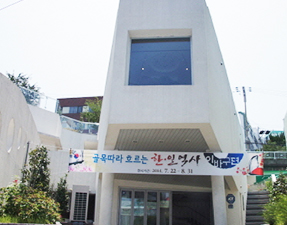
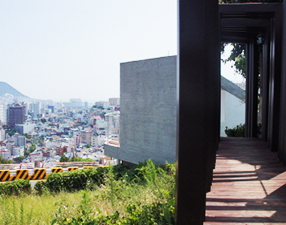
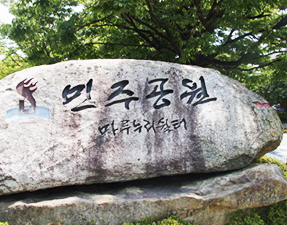
Shanghai street, Kim Min Bu Observatory, the site of Baekje Hospital which is the first private general hospital in Busan, Namseon Warehouse which is the largest distribution trading center in Busan, Choryang elementary school which opened in 1937, Choryang Church established in the late 1800s, and Sillyeong-dang, the shrine to the village god. The stories Ibagu-gil is embracing are telling us the modern and comtemporary history. At the ‘Diorama of History’ built in the corner of the road coming up to Jungang Park from Yeongju-dong, you can reflect on the history of Busan as looking down the curved streets. Diorama is a term for filming, meaning a reduced size model or view. So it can be assumed that the diorama of history means to look into the reduced size hillside road like a scene from a movie. Imagine the modern age. The western missionaries reaching the port and the churches they build, hospitals, the street full of merchants from Qing and their goods, women in foreign brand shoes going to Qingwan street, places where the Japanese military stubbornly persisted the land was theirs, the joy of liberation, the Japanese coming back to their country, enemy’s houses, Busan as the temporal capital of Korea with the refugee from all around the country, fathers who build shabby houses for their families, sons leaving for the war to make money, those who returned and who didn't, the street in front of American Cultural Center where the pro-democracy movement took place, the young men hiding in a church to evading from arrest. The hillside road is the place these whole stories are stuffed fully. You may find another story hidden on the street you pass by, or the street may dig up yours.
From the top of Gubongsan mountain where Democracy Park and Jungang Park are attached, you can go to everywhere on the hillside street by picking any route. The worn out lives have survived under any situation, and they forever will. The young taking hold of their dream named a job are commute to the library in Democracy Park. Some of them would soak into the hillside road, and their stories survived as time passing by would be an Ibagu.






